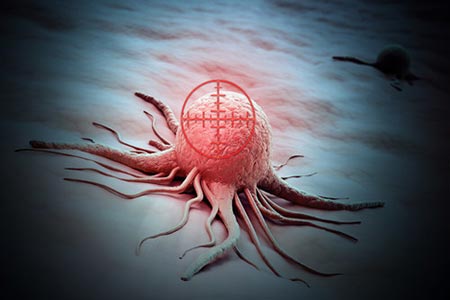Cancer is among the leading causes of death in many countries and is progressively becoming a bigger burden on societies.
One of the main challenges of developing therapies to fight this deadly disease is that drugs should target cancer cells exclusively and have as few side effects as possible.
Among the many candidate compounds currently under study, the combination of boron dipyrromethene (BODIPY) with metal–organic macrocycles (MOCs) and metal–organic frameworks (MOFs) shows great potential not only to fight cancer effectively, but to also help researchers understand the disease better.
In a recent review article published in Coordination Chemistry Reviews, a team of scientists led by Professors Chang Yeon Lee and Gajendra Gupta of Incheon National University, Korea, discussed the evolution and recent progress in the field of BODIPY-based MOCs and MOFs, with a focus on the compounds' potential roles as both anticancer drugs and tools for cancer research.
The article explains the compounds' various advantages and synergies with other medical techniques and also addresses the major roadblocks to their widespread application.
So, what are these materials and what makes them good combinations? MOCs and MOFs are metal complexes that serve as versatile platforms onto which new functionalities can be easily introduced through modifications.
Both are widely used in biomedicine and have shown potential as anticancer agents with good selectivity. However, when BODIPY is used in MOCs or MOFs, the photophysical properties of the resulting compound can be fine tuned to achieve diverse effects.
First, BODIPY-based complexes are good photosensitizing agents for photodynamic therapy, in which a drug is activated by light to destroy target cells. When combined with MOCs or MOFs, the efficacy of these complexes as anticancer drugs increases. Second, BODIPY-based complexes are sensitive to the acidity (pH) of the medium.
Because certain malignant tumors tend to have lower pH (acidic), these compounds could be further engineered so as to exclusively target cancerous cells within the body by exploiting this mechanism. Last, but certainly not least, the fluorescent properties of MOCs and MOFs can be tailored so that their position within cells can be easily tracked using fluorescence microscopy techniques.
"The sheer ease of localizing BODIPY-based MOC/MOF drugs inside treated cancer cells will help molecular and cell biologists understand the mechanisms of action of these molecules against cancer," explains Prof. Lee.
Despite some of the limitations of BODIPY-based MOCs/MOFs, such as a time-consuming synthesis and our incomplete understanding of its toxicity, these compounds could become key players in our fight against cancer. "MOCs and MOFs designed with BODIPY have all the essential features required to be an ideal anticancer drug candidate," concludes Prof. Gupta. Be sure to keep an eye out for these advanced molecules and the wonders they might bring to the world of cancer therapy and research.




